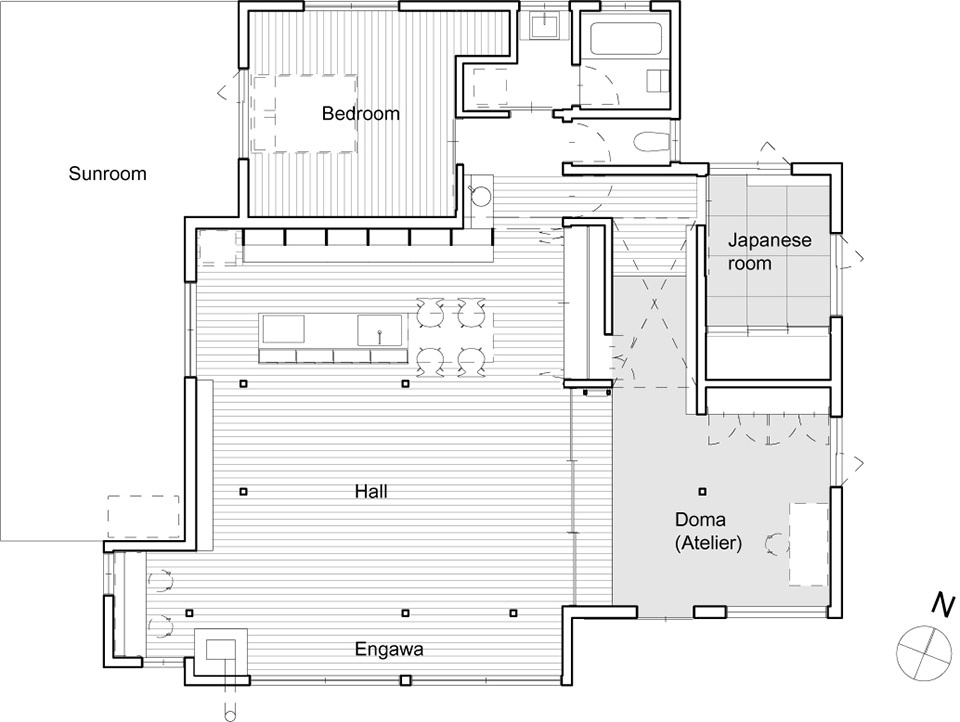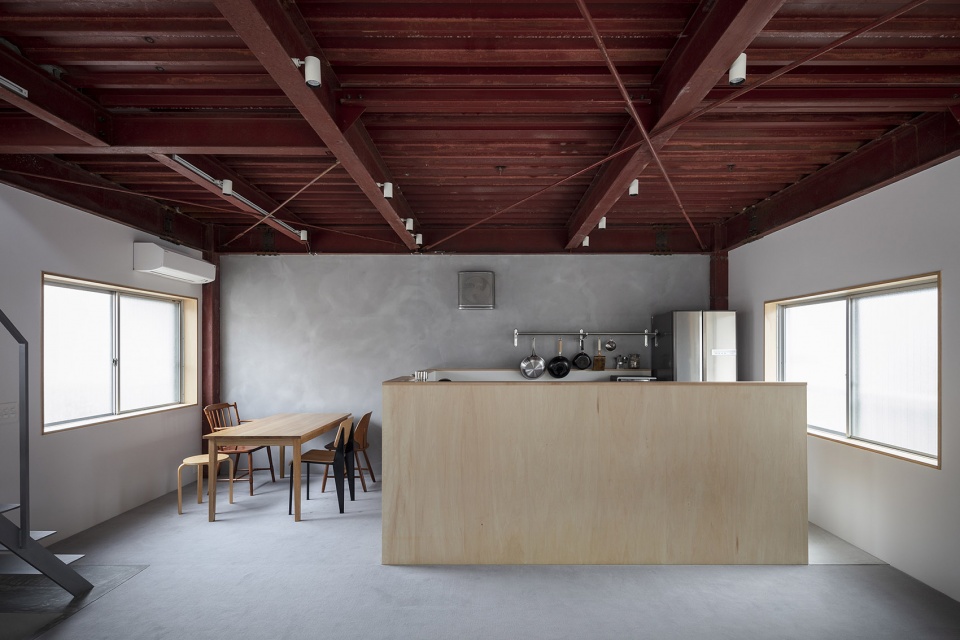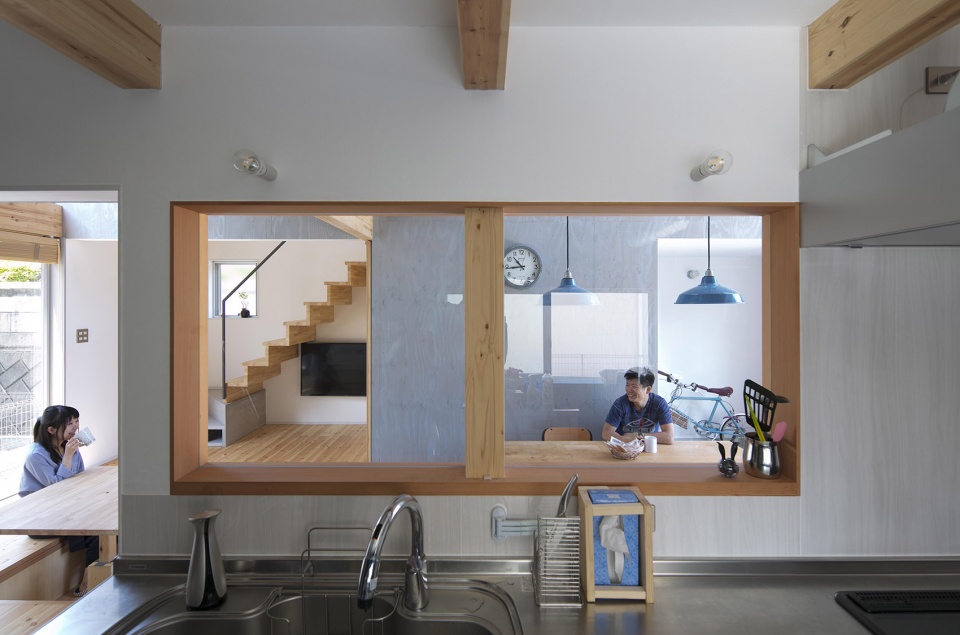

老住宅中的生活
Living in an old house
项目的业主是一个四口之家,夫妇分别从事陶艺与厨师工作,两人育有两个年幼的孩子。项目坐落于日本冈山,是一栋带有茅草屋顶的日式传统住宅,业主购买了这栋住宅并希望对其进行翻新改造,将其作为他们的新家。除了本住宅外,场地周围还零星坐落着几栋带有金属屋面的日式传统民居,至今还有人生活在这些房屋中。
A house for a family of four: a potter, a cook, and their young children. The client decided to purchase and renovate an minka (old Japanese-style house) with a thatched roof to live in Okayama as a new base of living. The site is dotted with several old thatched-roof houses with metal roofing that have also been lived in until the present day.
▼住宅外观,exterior view of the minka © Norihito Yamauchi
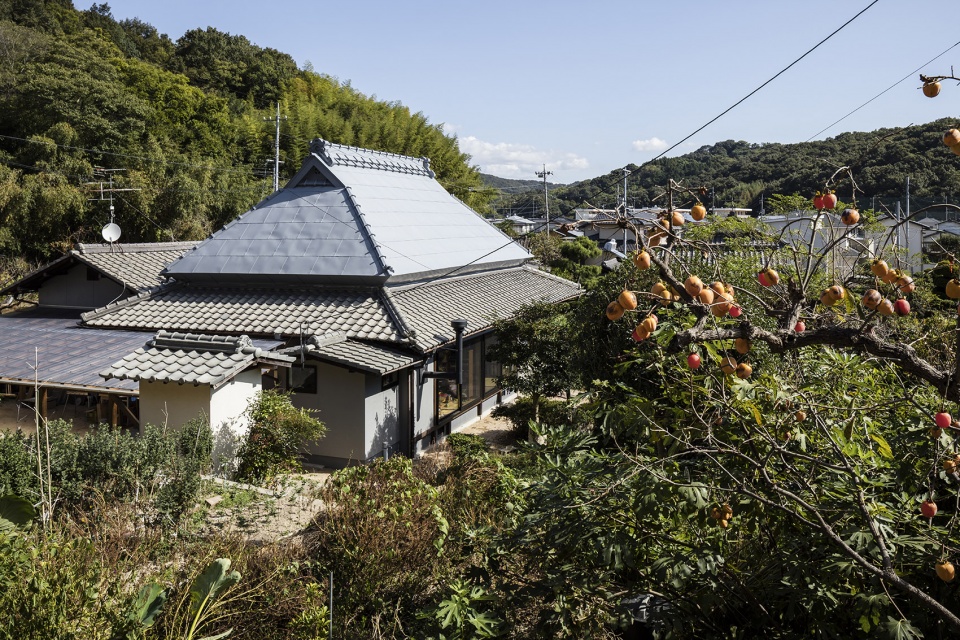
▼主入口立面,entrance facade of the house © Norihito Yamauchi
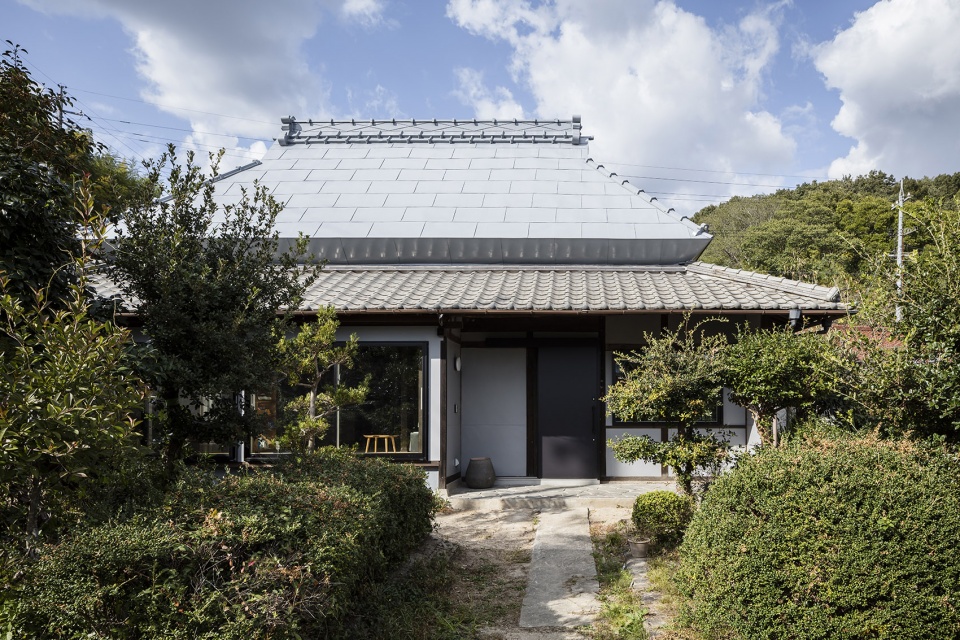
因此,设计团队希望尽量保留原住宅的历史与特色,同时延续这栋日式传统住宅内宽敞舒适的氛围。设计的核心理念旨在用现代的设计语言对这栋老住宅进行全新的诠释,使其成为家庭的理想生活场所。为了适应现代生活方式的需求,设计团队对原住宅的平面空间布局进行了大量的修改与协调。
Therefore, we wanted to restore the generous atmosphere of the old private homes in the area and carry on the existence of the private house. We wanted to revive the form of the house in the modern age as a place for living that would support this family, with a floor plan that was largely modified to fit modern lifestyles.
▼室内概览,overall of interior © Norihito Yamauchi
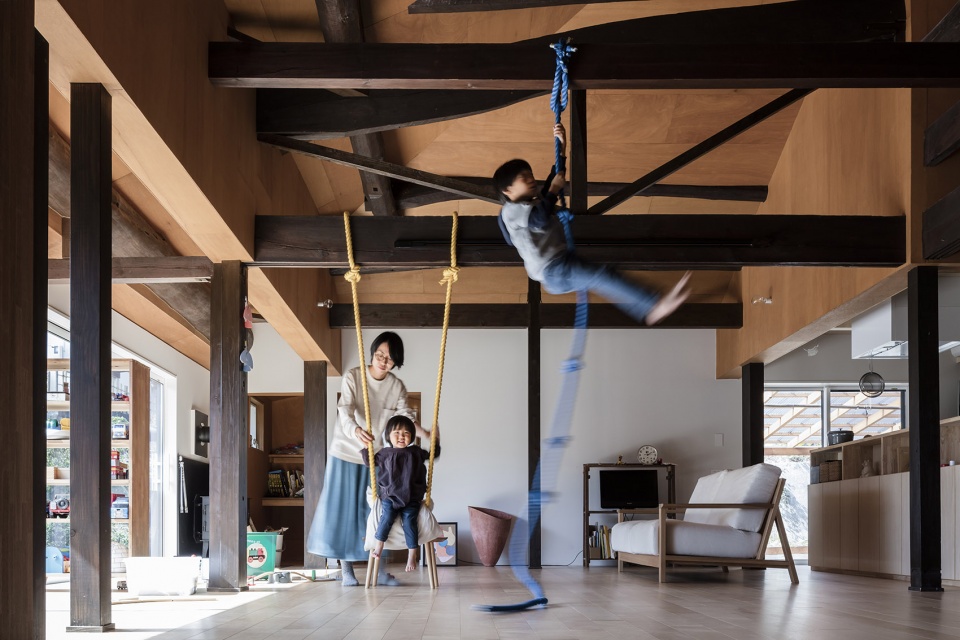
土间与大厅
Doma and Hall
住宅内部被划分为日间活动区与夜间休息区。日式传统玄关“土间”与大厅由三扇推拉门隔开,当门全部打开时,这里就形成了一处面积约90平方米的开方式生活空间。
Space during the day, and the sleeping space. Doma(The earthen floor) and the hall are separated by three sliding doors, which can be opened to create a room of about 90㎡.
▼土间/工作室,doma/atelier © Norihito Yamauchi
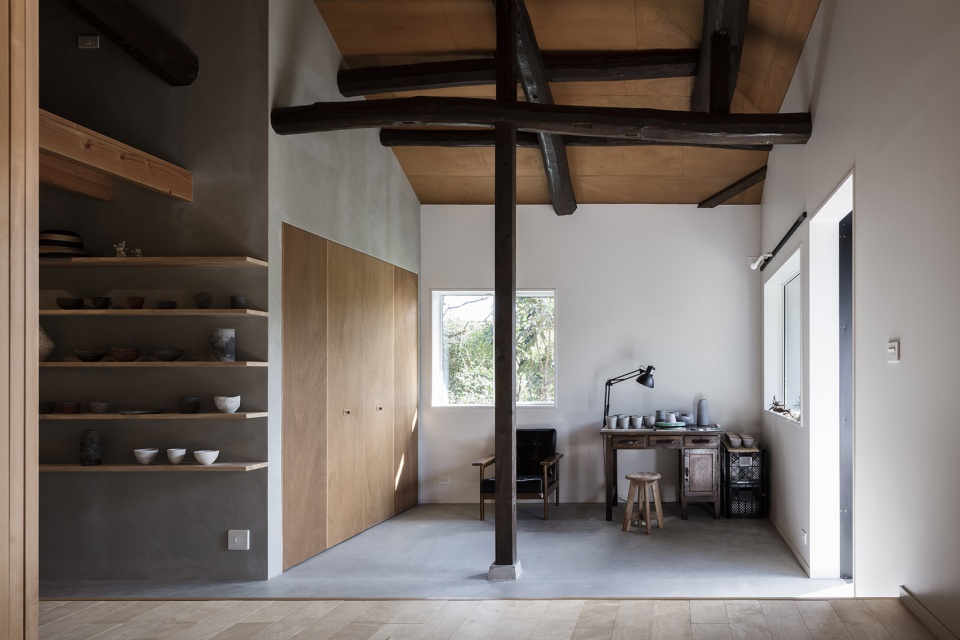
▼男主人的工作区,ceramic atelier © Norihito Yamauchi
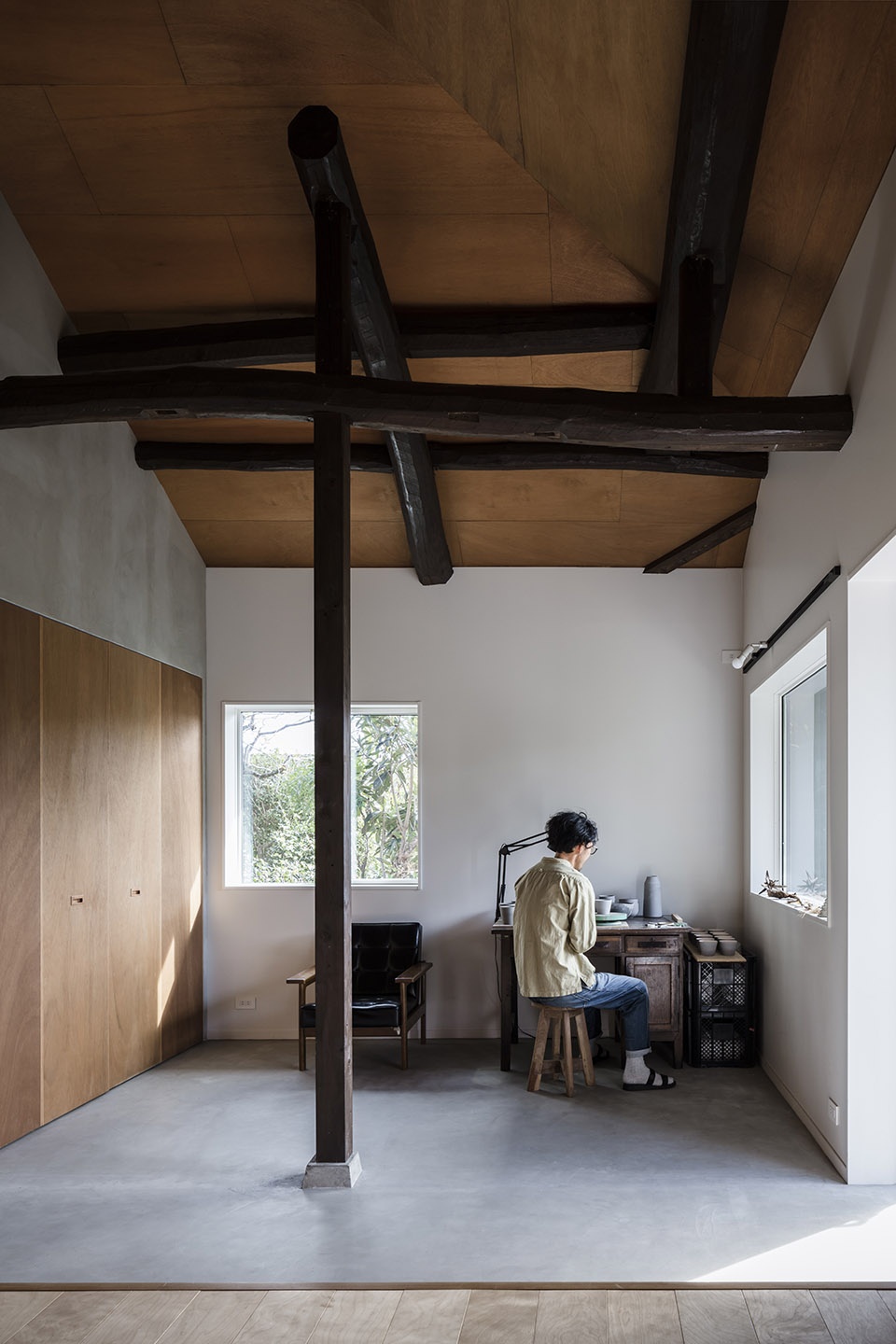
▼土间承担了作品展示区的功能,
the doma also serves as the display area © Norihito Yamauchi
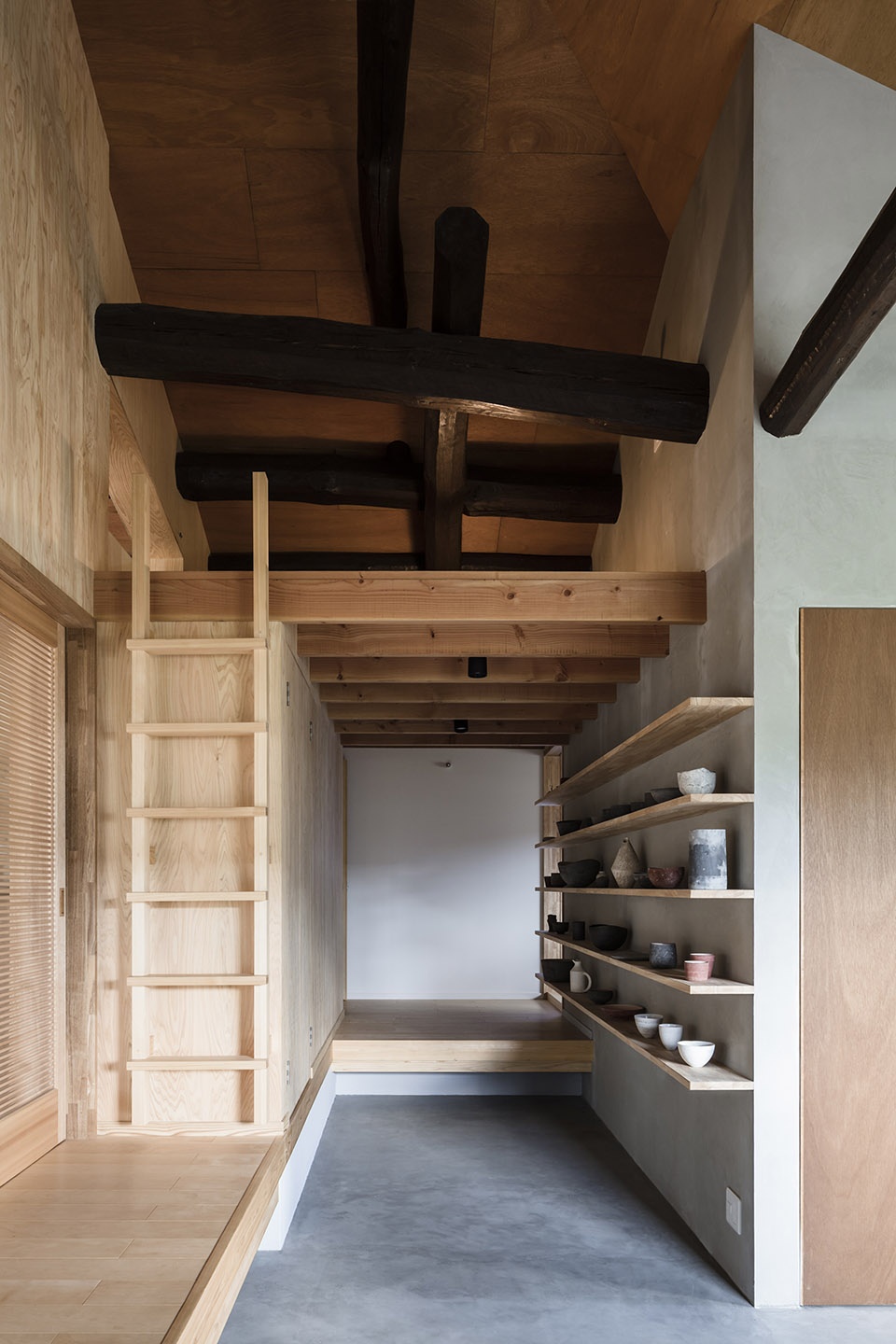
▼由大厅看土间与入口,
viewing the doma and the entrance of the house © Norihito Yamauchi
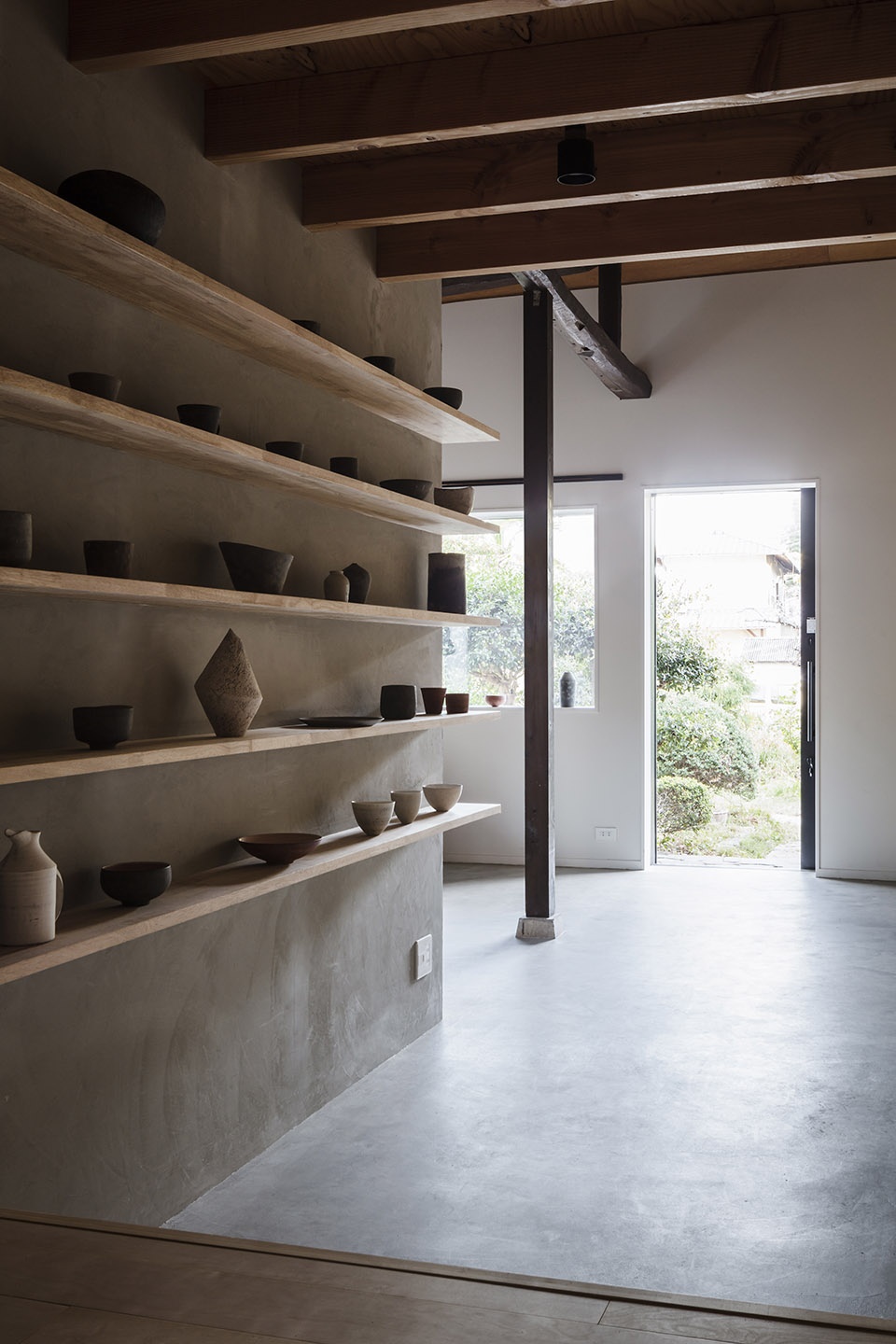
高耸的坡屋顶定义了室内的空间形态,4米高的屋顶空间营造出宽敞的室内氛围。对于屋主人来说,这栋住宅不仅仅是住所,同时也是他们的工作室以及和社区邻居们聚会社交的场所。
The hipped ceiling, which follows the shape of the roof, is about 4 meters high at the top, making it a very large space. The house is not only a residence, but also a place of work and a gathering place for the community.
▼土间与大厅之间由推拉门分隔,doma and the hall are separated by three sliding doors © Norihito Yamauchi
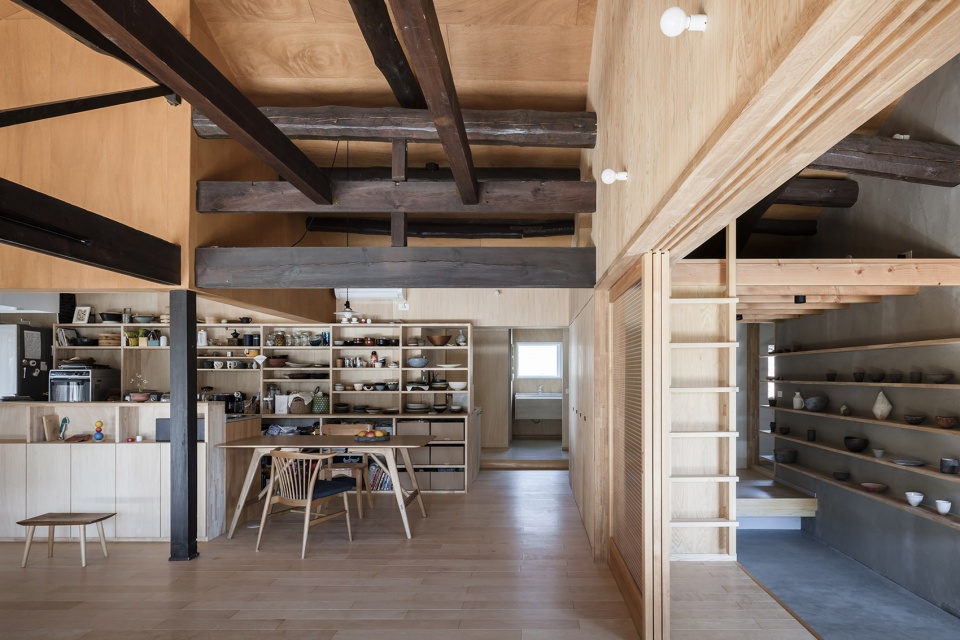
▼由日间生活区大厅看土间,viewing the doma atelier from the hall © Norihito Yamauchi
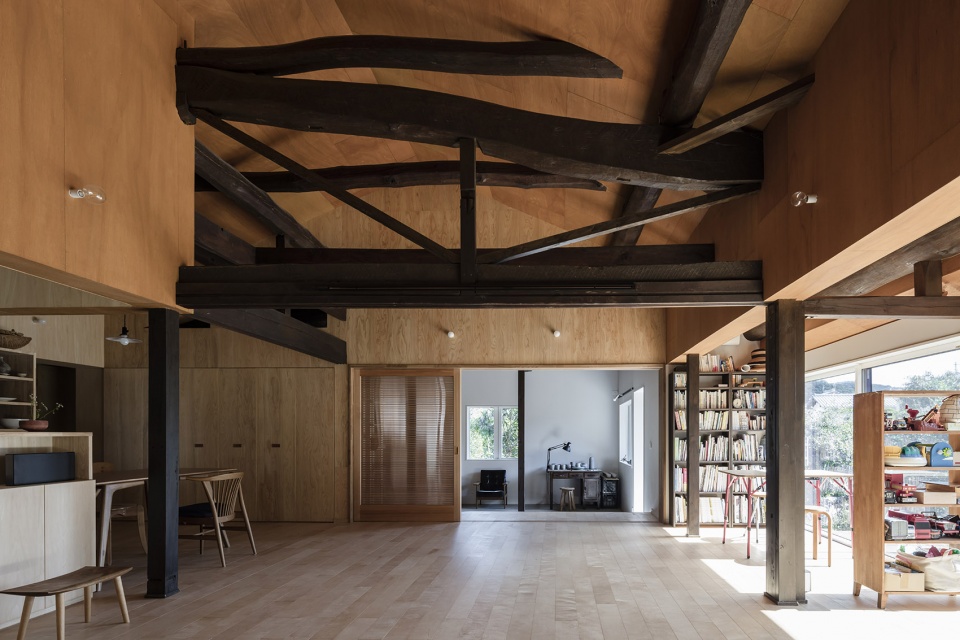
▼开放式生活区,open living area © Norihito Yamauchi
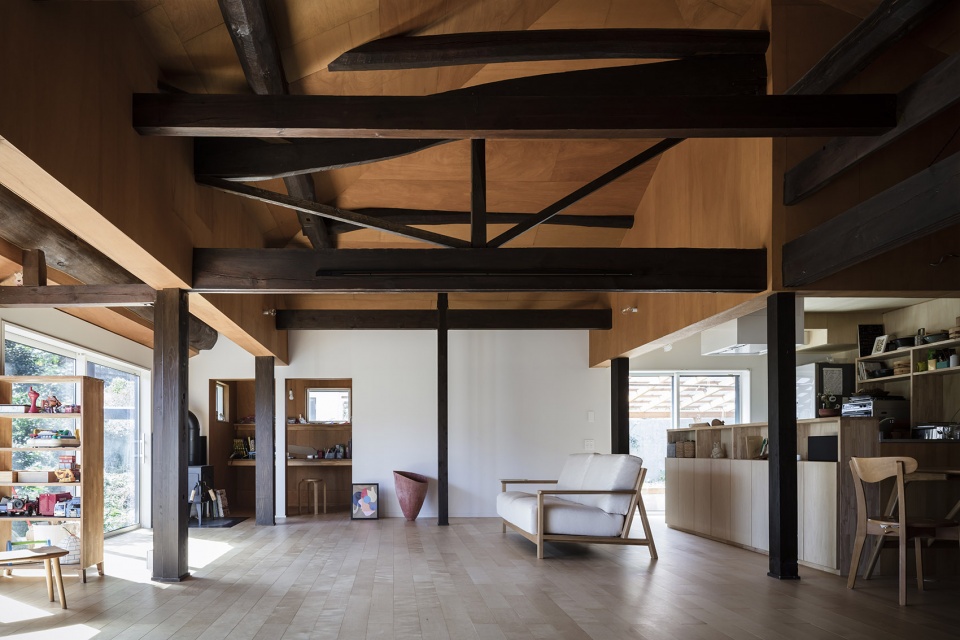
▼生活区细部,details of the living area © Norihito Yamauchi
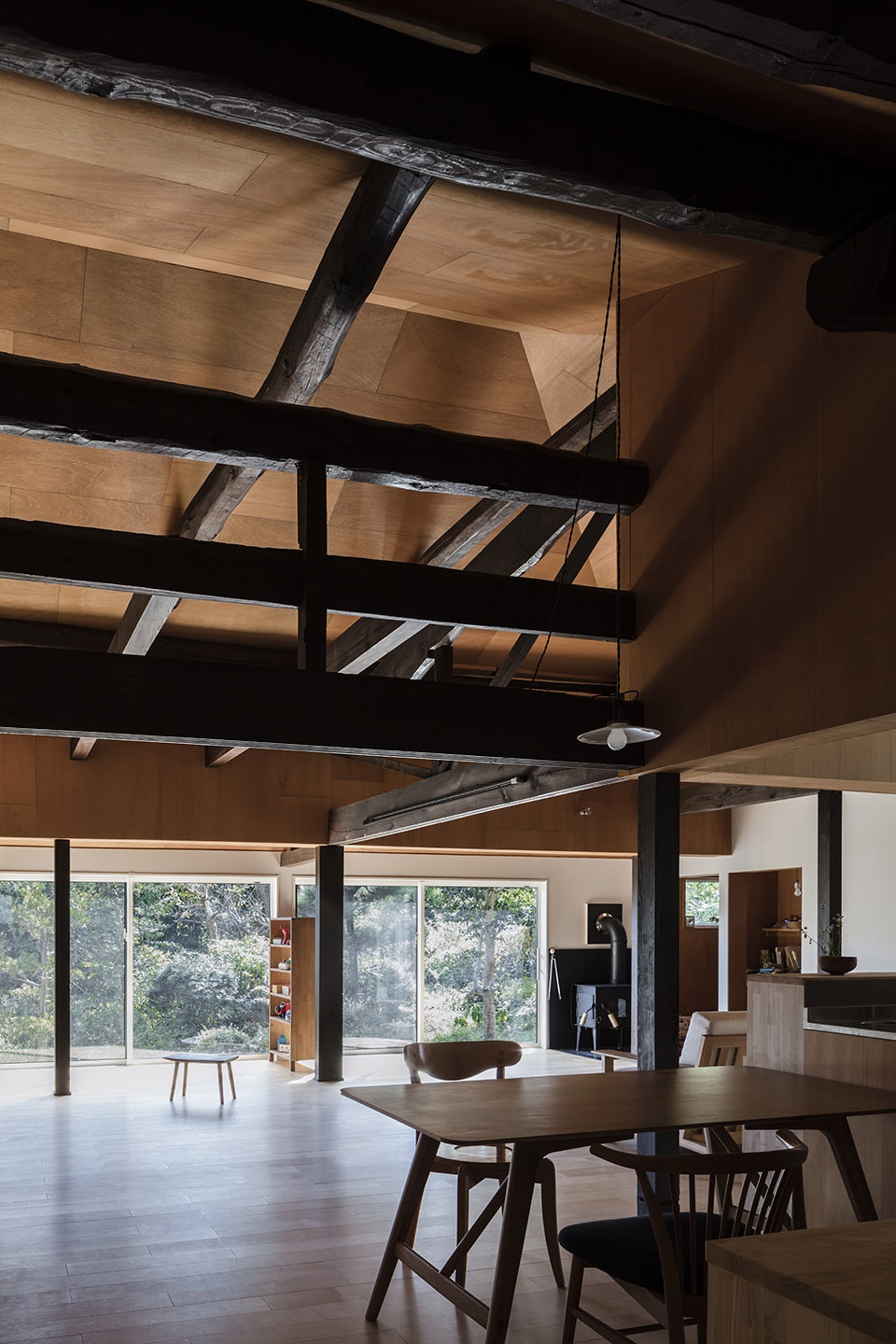
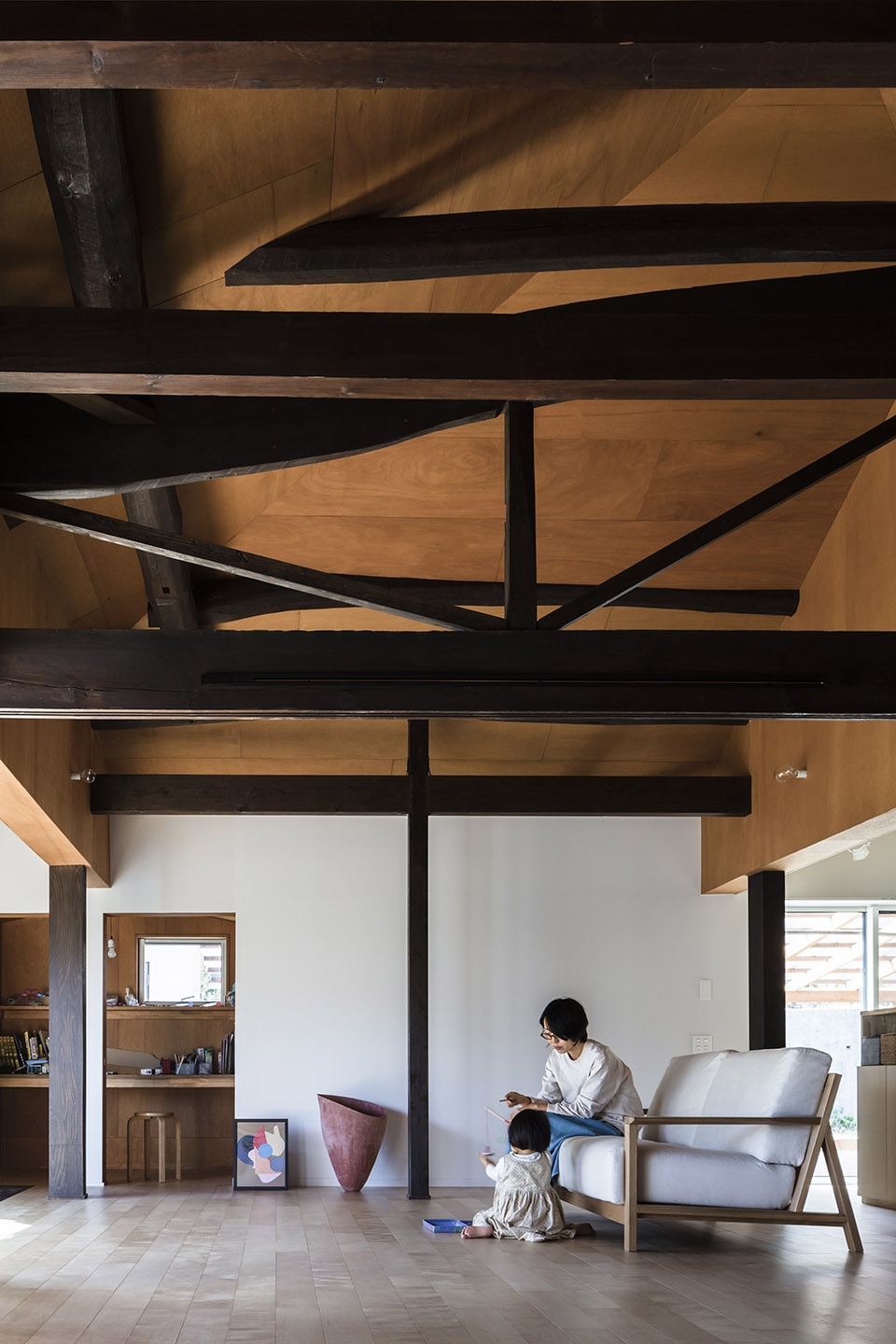
▼烧窑区与工作区,the kiln area and work area © Norihito Yamauchi
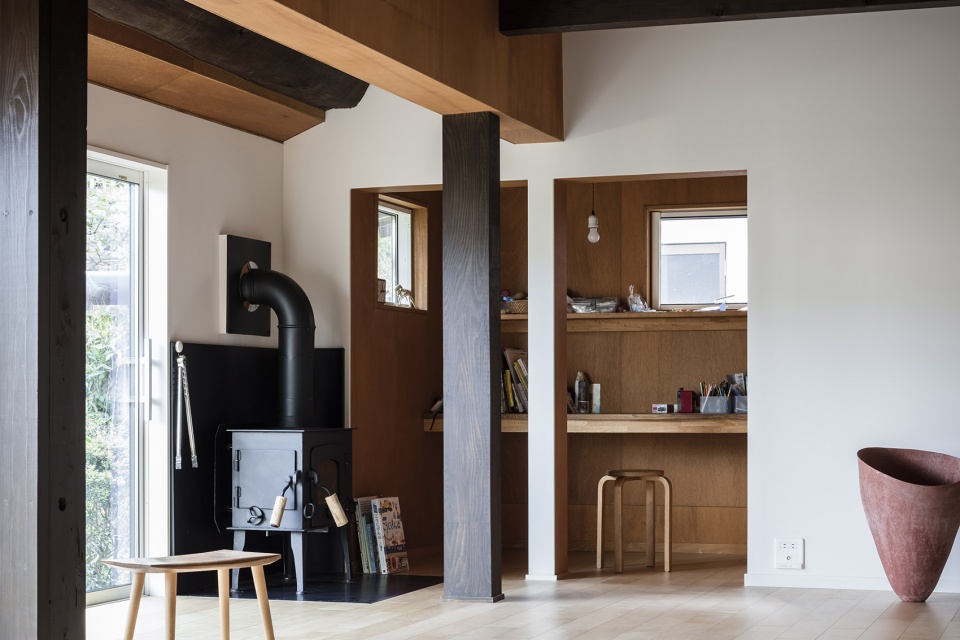
▼面向花园开放的阅读休闲区,engawa facing the rear garden © Norihito Yamauchi
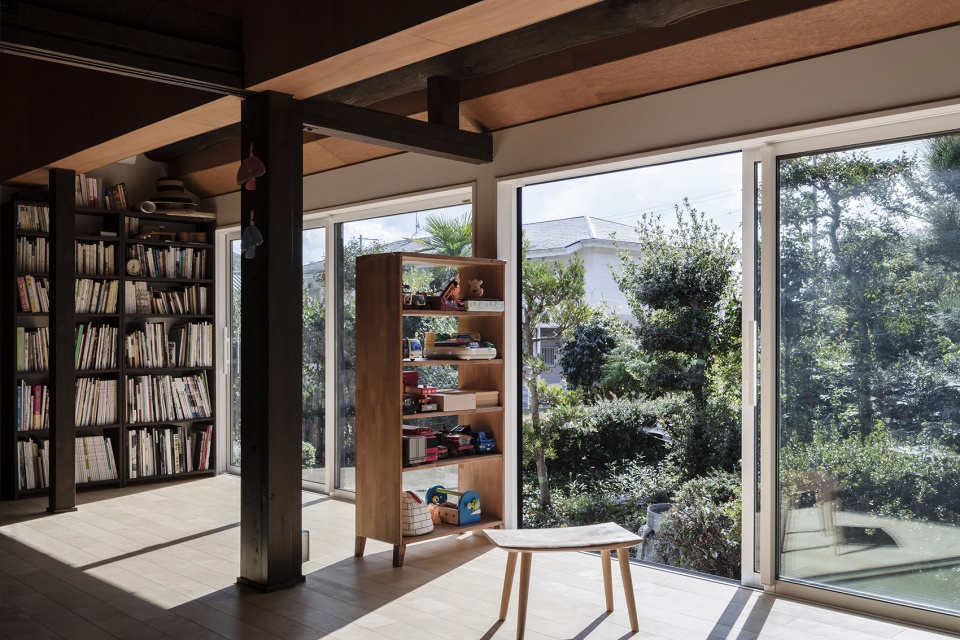
灵活变化的住宅
A house that allows for change
设计的首要任务不是在项目完工时将所有空间布局定死,而是根据家庭在此的实际生活需求对住宅进行不断的优化与完善。因此,设计团队决定不在该住宅中规划专门用于幼儿的空间,而是在未来利用现有的结构为房间进行简单的划分。
▼分析图,analysis diagram © raumus studio
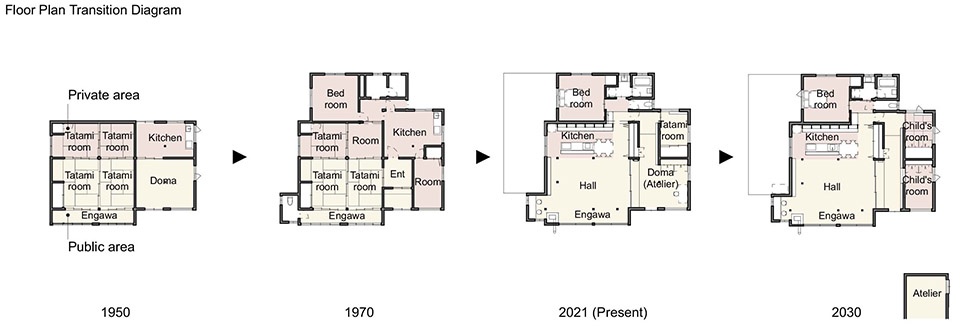
Rather than completing everything at the time of building completion, our first priority was to think about it while living in the house, and to We decided not to build a nursery for the children when they are young, but to use the existing structural materials to simply partition the rooms in the future.
▼卧室入口,entrance of the bedroom © Norihito Yamauchi
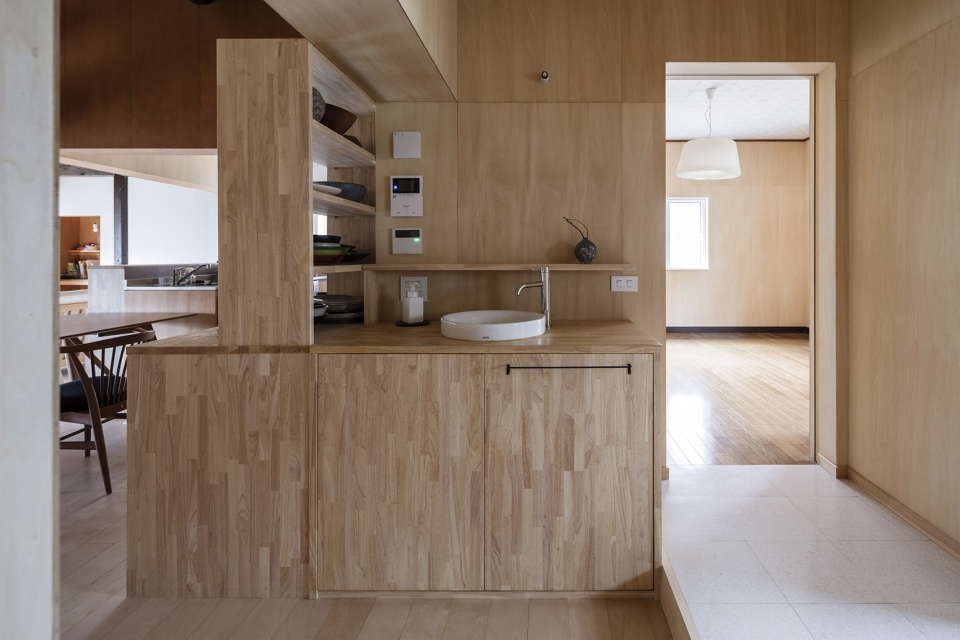
▼浴室入口,entrance of the bathroom © Norihito Yamauchi
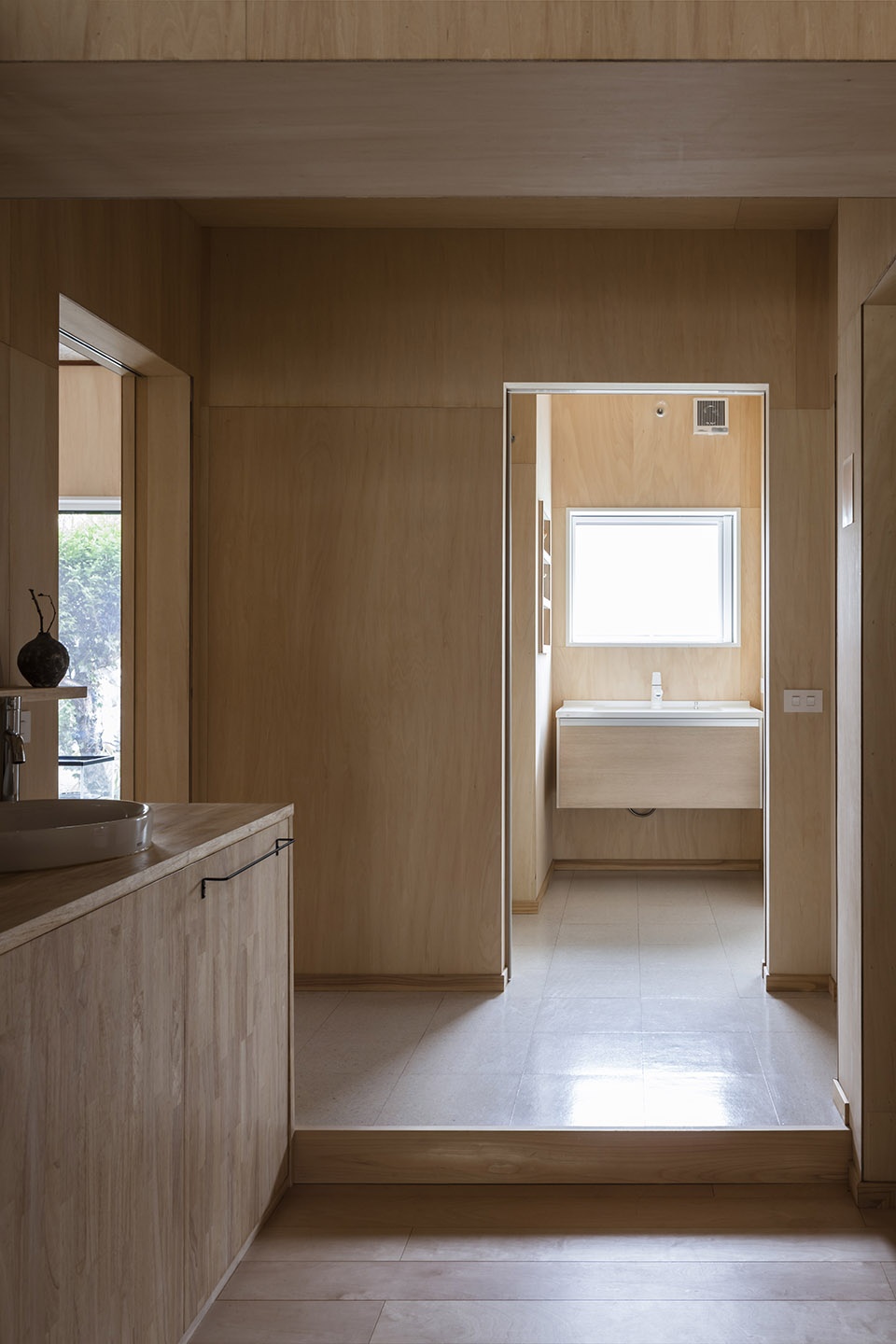
▼卧室内部,interior of the bedroom © Norihito Yamauchi
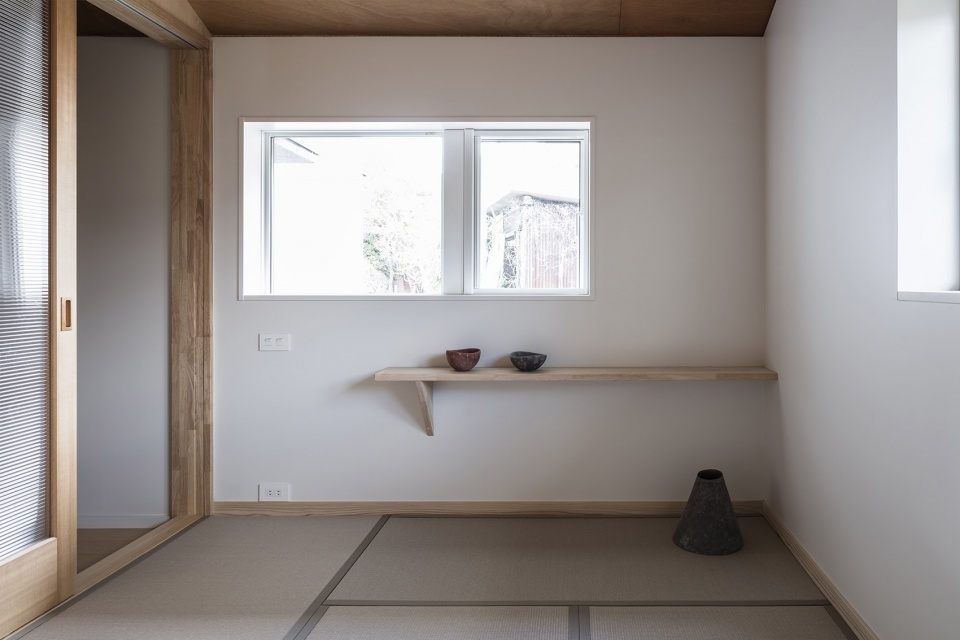
男主人的工作室也位于场地之中,而目前的土间也能够在未来转化为儿童房,这些策略均旨在使该住宅适应家庭未来生活方式的变化。
The husband’s atelier is also located on the site, and the earthen floor area is intended to be used as a children’s room, making the house adaptable to future lifestyle changes.
▼夜景,night views © Norihito Yamauchi
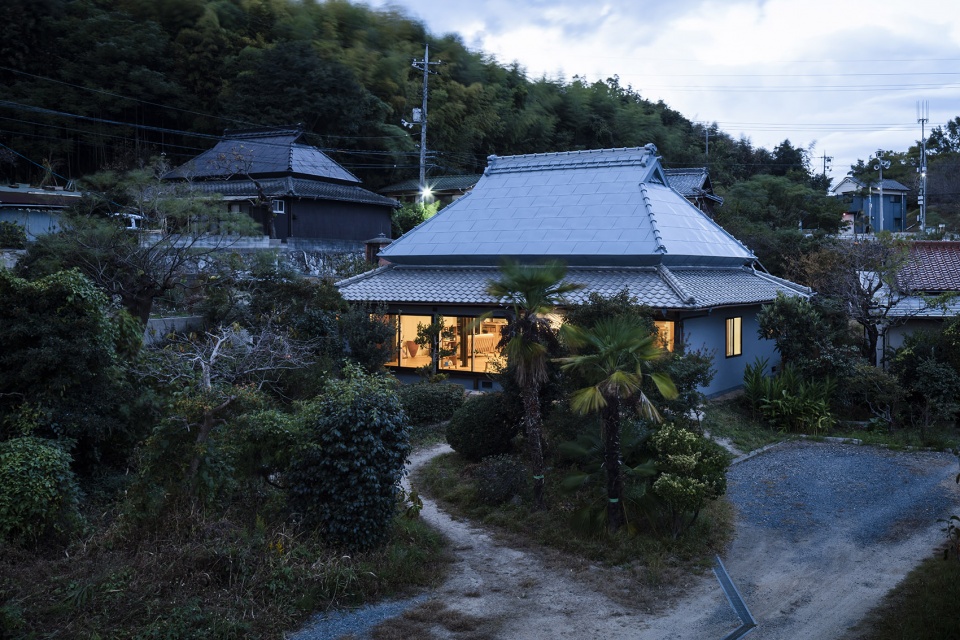
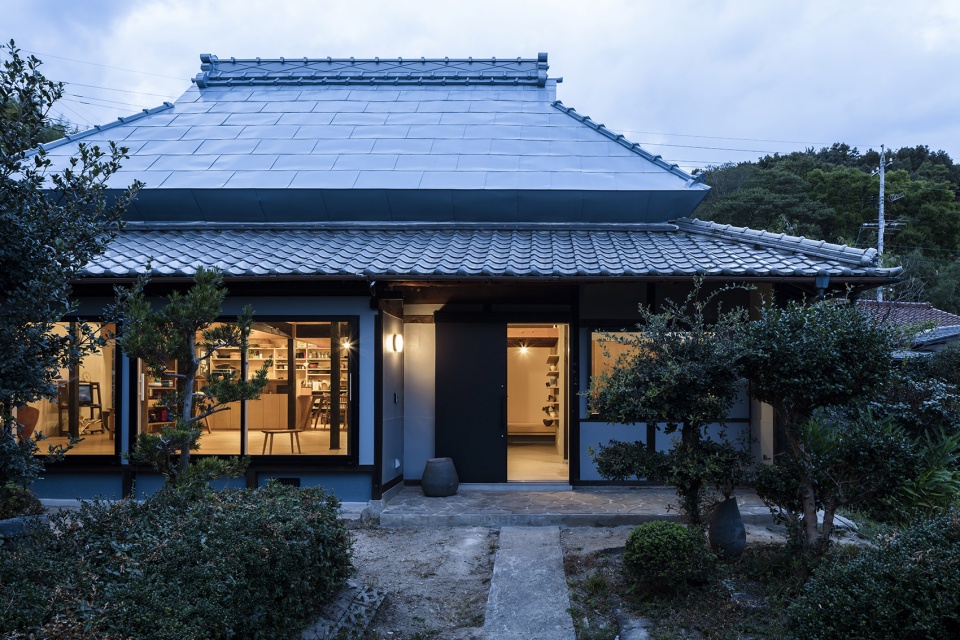
▼平面图,plan © raumus studio
